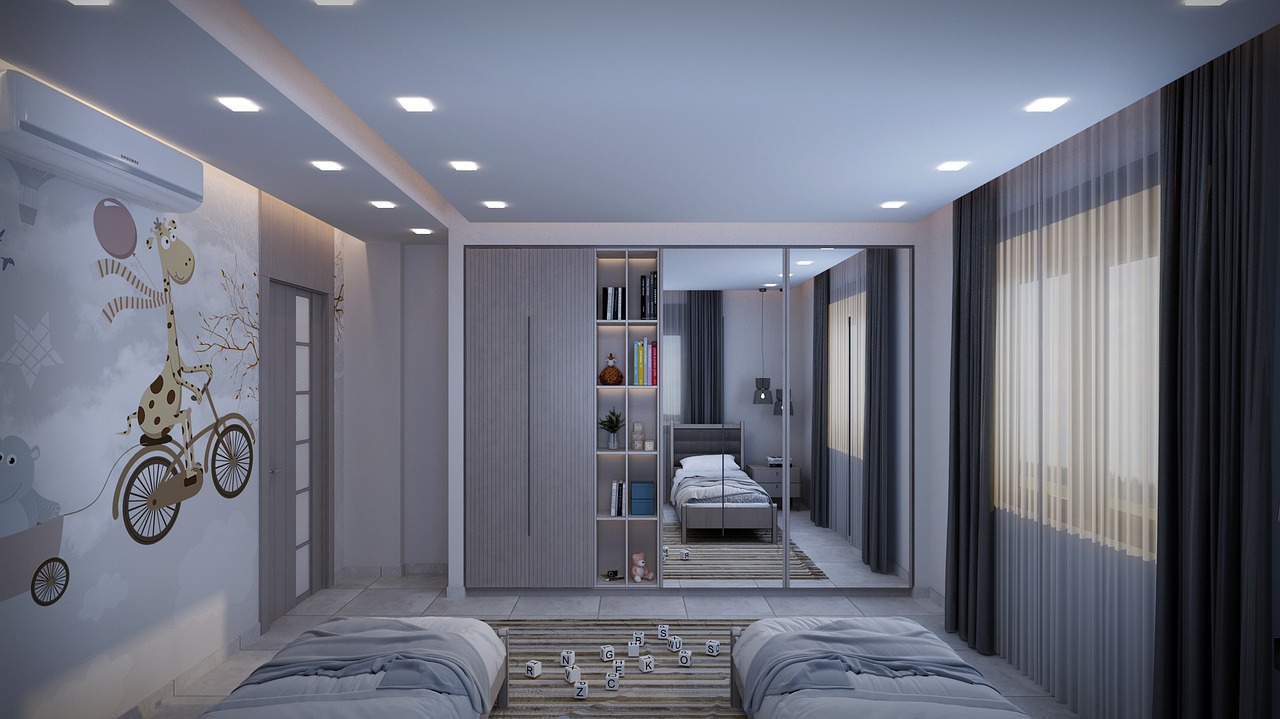How to Set Up a Keyless Entry System for Your Rental
In today’s digital era, smart technology is transforming how rental property owners manage access to their homes. Traditional keys can be lost, copied, or forgotten, making them inconvenient for both landlords and guests.
A keyless entry system eliminates these issues by providing secure, remote-controlled access that enhances convenience and security.
Whether you own a short-term vacation rental or a long-term rental property, installing a keyless entry system can streamline your check-in process, improve guest experience, and reduce security risks.
This guide will walk you through everything you need to know about setting up a keyless entry system, from selecting the right lock to installing and managing it effectively.
1. Understanding Keyless Entry Systems
What is a Keyless Entry System?
A keyless entry system allows tenants, guests, or property managers to unlock doors without the need for a physical key. Instead, these systems use digital authentication methods such as PIN codes, biometrics, mobile apps, or key cards.
Types of Keyless Entry Systems
There are several types of keyless entry systems to choose from, depending on your property’s needs:
- Smart Locks with Keypads: Require users to enter a PIN code to unlock the door. Ideal for short-term rentals where guests receive a temporary code.
- Mobile App-Controlled Locks: Guests can unlock doors using their smartphones via Bluetooth or Wi-Fi. Some models allow remote access control.
- Wi-Fi and Bluetooth-Enabled Locks: Offer remote monitoring and control, making them perfect for landlords who manage multiple properties.
- Biometric Smart Locks: Use fingerprints or facial recognition for access. More common in high-security buildings than in rentals.
By understanding these options, you can select the most suitable system for your rental property.
Read This: Why Investing in Real Estate is a Smart Move in 2025
2. Choosing the Right Keyless Entry System
Before purchasing a keyless entry system, consider the following factors:
1. Compatibility with Your Door
Ensure the lock fits your door’s thickness and existing lock setup. Some keyless locks require a deadbolt, while others replace the entire lock mechanism.
2. Connectivity Options
- Bluetooth: Works within a limited range and is suitable for on-site property management.
- Wi-Fi: Allows remote access but may require a bridge for connectivity.
- Z-Wave: Integrates with home automation systems like SmartThings and Hubitat.
3. Integration with Rental Platforms
For vacation rentals listed on Airbnb or Vrbo, select a lock compatible with these platforms to automate guest access.
4. Battery Life and Backup Options
Look for a system with long-lasting battery life and emergency power options in case the battery runs out.
5. Security Features
- Auto-lock: Ensures the door locks itself after a set time.
- Access logs: Tracks who enters and exits the property.
- Encryption: Prevents unauthorized hacking attempts.
Recommended Keyless Entry Brands
Some of the most trusted brands include:
- August Smart Lock Pro (Wi-Fi and Bluetooth-enabled, works with existing deadbolts)
- Schlage Encode (Built-in Wi-Fi, no additional hub required)
- Yale Assure Lock SL (Touchscreen keypad with smart home integration)
- Ultraloq U-Bolt Pro (Fingerprint recognition and mobile app control)
3. Installing Your Keyless Entry System
Step-by-Step Installation Guide
- Check Door Compatibility
- Measure your door’s thickness.
- Ensure the lock fits existing holes or be prepared to drill new ones.
- Remove the Old Lock
- Unscrew and detach the old deadbolt or handle lock.
- Clean the area to prepare for the new lock.
- Install the New Keyless Lock
- Follow the manufacturer’s instructions to attach the keypad or smart lock.
- Ensure proper alignment and secure the lock with screws.
- Set Up Power
- Insert batteries (most locks use AA or rechargeable batteries).
- If the lock is wired, connect it to your home’s power supply.
Troubleshooting Common Issues
- If the lock doesn’t fit, check if you need an adapter plate.
- If it doesn’t turn smoothly, ensure the deadbolt aligns properly with the strike plate.
- If connectivity issues arise, reset the lock and reconnect it to Wi-Fi or Bluetooth.
4. Setting Up Digital Access for Guests
Creating and Managing Access Codes
Most smart locks allow you to generate unique codes for different users.
- Create temporary codes for short-term guests.
- Assign permanent codes for property managers or maintenance staff.
- Change codes regularly to maintain security.
Automating Check-in and Check-out
- Set up scheduled access that activates only during a guest’s stay.
- Automate the expiration of guest codes upon check-out.
Using Remote Access for Monitoring
- Receive alerts when doors are locked or unlocked.
- Control access from anywhere via a mobile app.
- Disable lost or unauthorized access codes remotely.
Read This: The Role of Paint in Home Aesthetics and Value
5. Integrating with Smart Home and Rental Platforms
Syncing with Airbnb, Vrbo, or Other Platforms
Many keyless entry systems integrate with vacation rental platforms. This allows automatic code generation for each booking.
Connecting with Smart Home Devices
Enhance your rental property’s security and convenience by linking your smart lock with:
- Security Cameras: Monitor who enters and exits.
- Smart Doorbells: See and speak to visitors before granting access.
- Smart Thermostats: Adjust the temperature automatically when guests arrive.
Automating Notifications and Access Logs
Set up automatic alerts for:
- Failed access attempts.
- Battery replacement reminders.
- Guest arrival notifications.
6. Security and Maintenance Tips
Regularly Updating and Rotating Guest Codes
- Change access codes frequently to prevent unauthorized re-entry.
- Use random, hard-to-guess PINs for added security.
Monitoring Battery Life
- Set alerts for low battery levels.
- Keep spare batteries or an external power backup handy.
Enabling Two-Factor Authentication
- Require both a PIN and mobile authentication for extra security.
Keeping a Physical Key Backup
- Store a backup key in a secure location in case of a system failure.
See This: Cost of Cement in Nigeria (2025 update)
Conclusion
Installing a keyless entry system for your rental property offers numerous benefits, including enhanced security, convenience, and seamless guest management. By choosing the right system, following a proper installation process, and integrating with smart home technology, you can optimize your rental operations while providing a modern experience for guests.
Ready to upgrade your rental security? Explore smart lock options today and transform how you manage property access.

